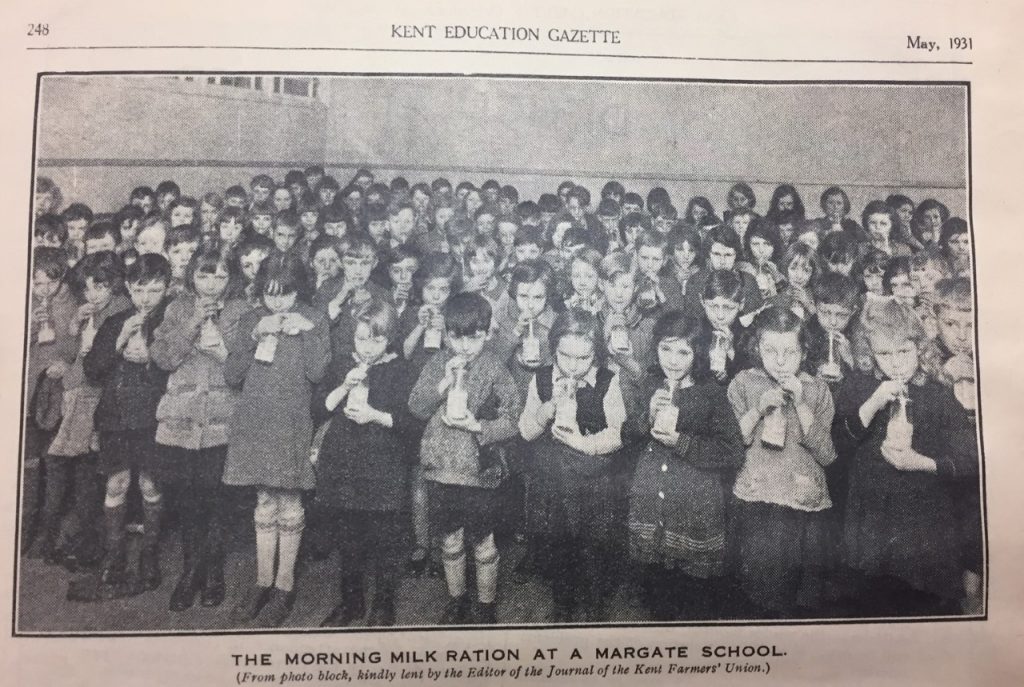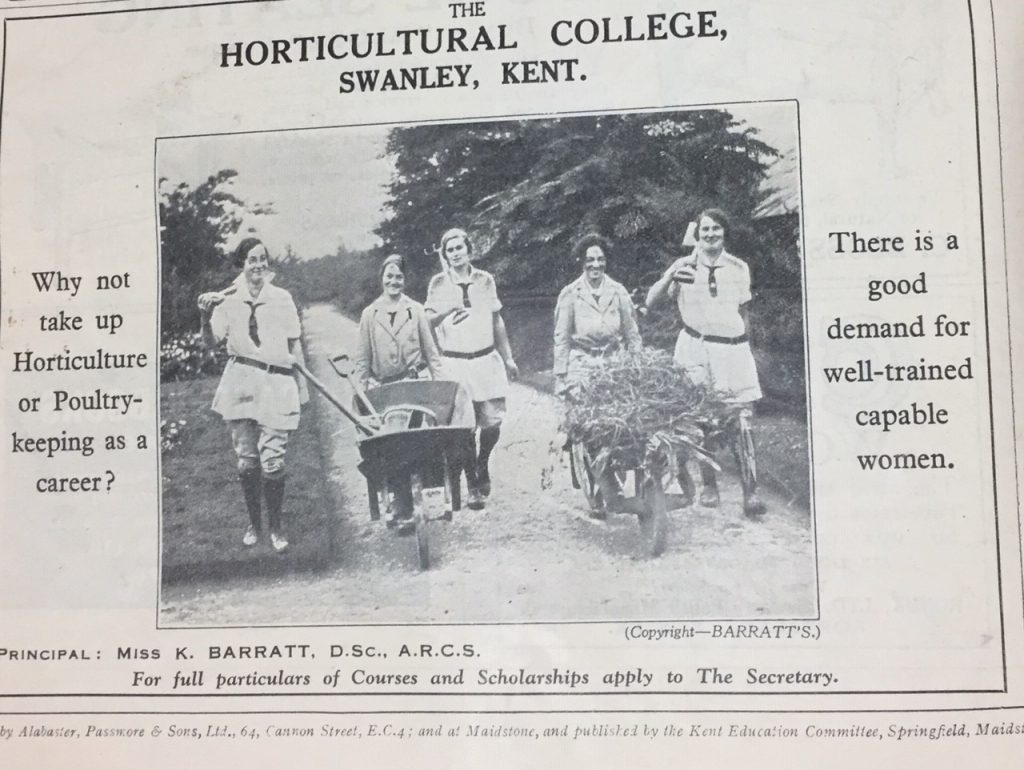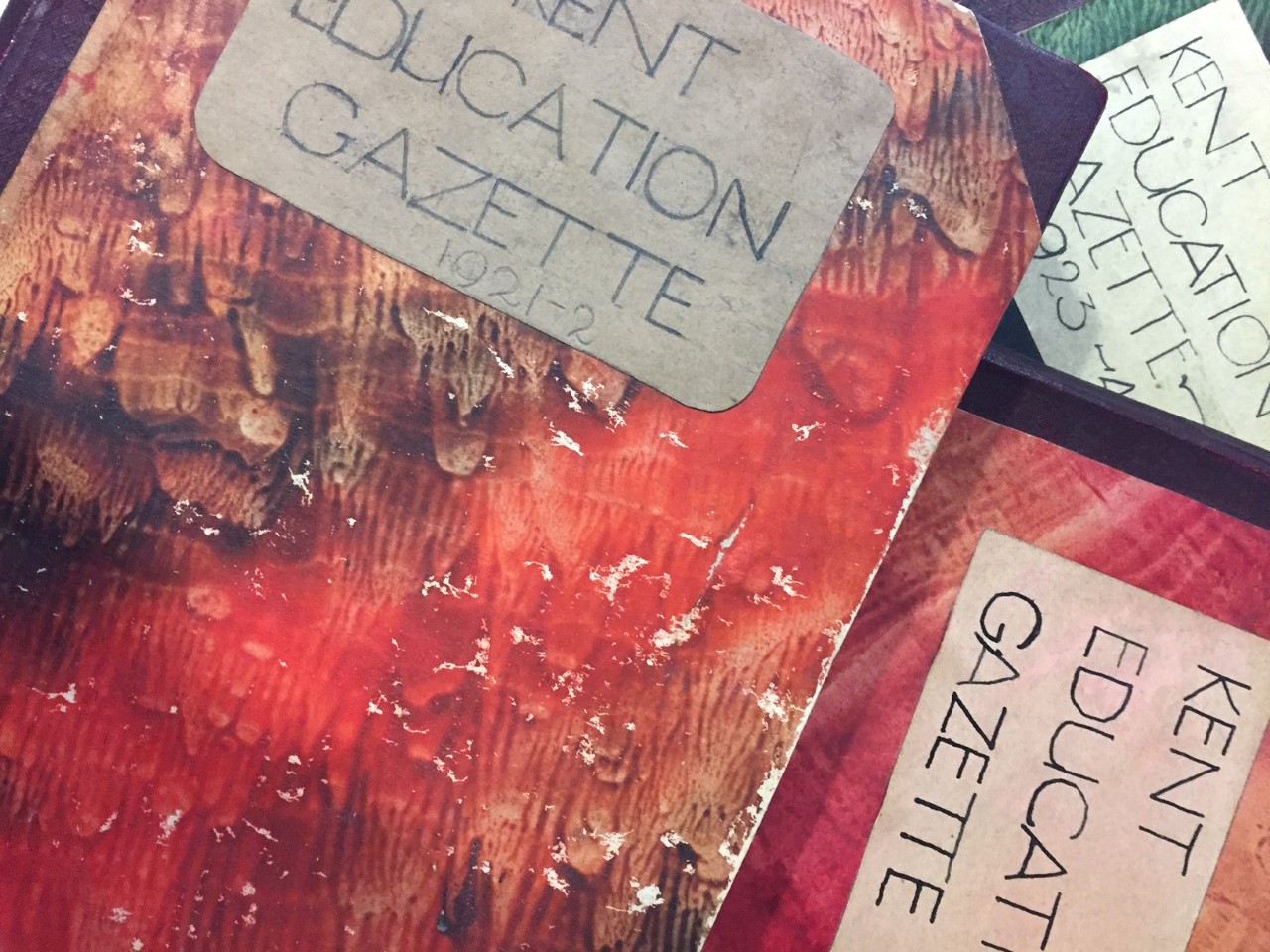The early 1920s was a period of hope and transformation after the horrors of the Great War. Education had been hard hit in the period 1914-18 with male teachers joining the war effort and school buildings requisitioned, and an investment of time and energy was needed to transform the county’s schools. An Act of Parliament in 1918 had raised the school leaving age from 12 to 14 meaning that additional teachers were required to cope with the increased number of pupils. Kent, like all counties, had to address the problems head on.
In June 1920, The Kent Education Committee established a Gazette of news to share good practice. It’s aims were to ensure a cohesive approach to education in the county. In the first edition, the committee explained that: “The work carried on in different types of school has been planned rather on the basis of the needs of certain classes than on those of the nation as a whole” and it committed to breaking down those barriers. In a country that was fundamentally gender and class ridden at this period, this was a positive step towards equality. The committee (37 men and three women) endorsed the monthly newsletter as “the official organ of the Kent Education Committee”.
The library at CCCU has recently received a generous donation of the Kent Education Gazette 1921-33. The monthly newsletters have been bound in marbled or floral decorative bindings with hand written titles and were formerly owned by Throwley Church of England primary school. These complement existing collections including the historical collection of teaching material which has books on teaching geography, geometry, algebra, English, science and physical training dating from the 1930s.
The Gazette includes articles on topics such as biblical study, elementary education, school attendance, savings associations, scholarships and education. The publication also provides a useful insight into educational material at this time, listing the county library accessions and advertisements for school suppliers. You could buy Gloy glue by the gallon, soft knitting wool and exercise books.

In-depth articles on obtaining clean school milk, gardening clubs, the responsibilities of the county school teacher, home craft in an elementary school, and the training of nursemaids give a unique view of education at this period. In addition, community history of pageants, scouting and holidays in some of the Kentish villages are well represented. For anyone interested in the history of education in the inter-war years, or the history of Kent schools and their communities, the gazettes are an excellent resource. They also include information about colleges and teacher training in the 1920s and early 1930s.

You can view the Gazettes by contacting the library and asking for an archives appointment. You can read about education in Canterbury on Kent Maps Online.
 Library
Library Michelle Crowther
Michelle Crowther 1402
1402


